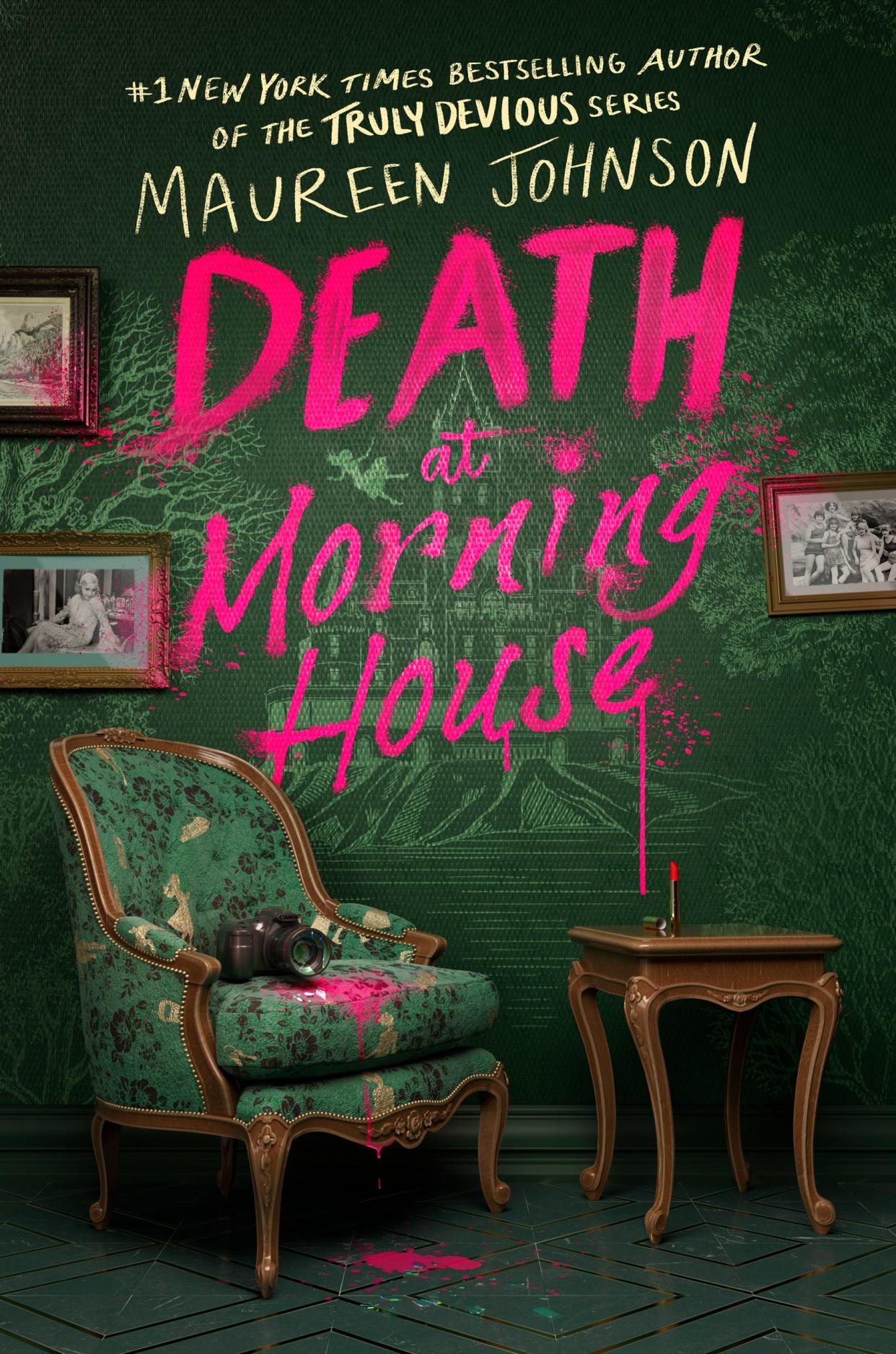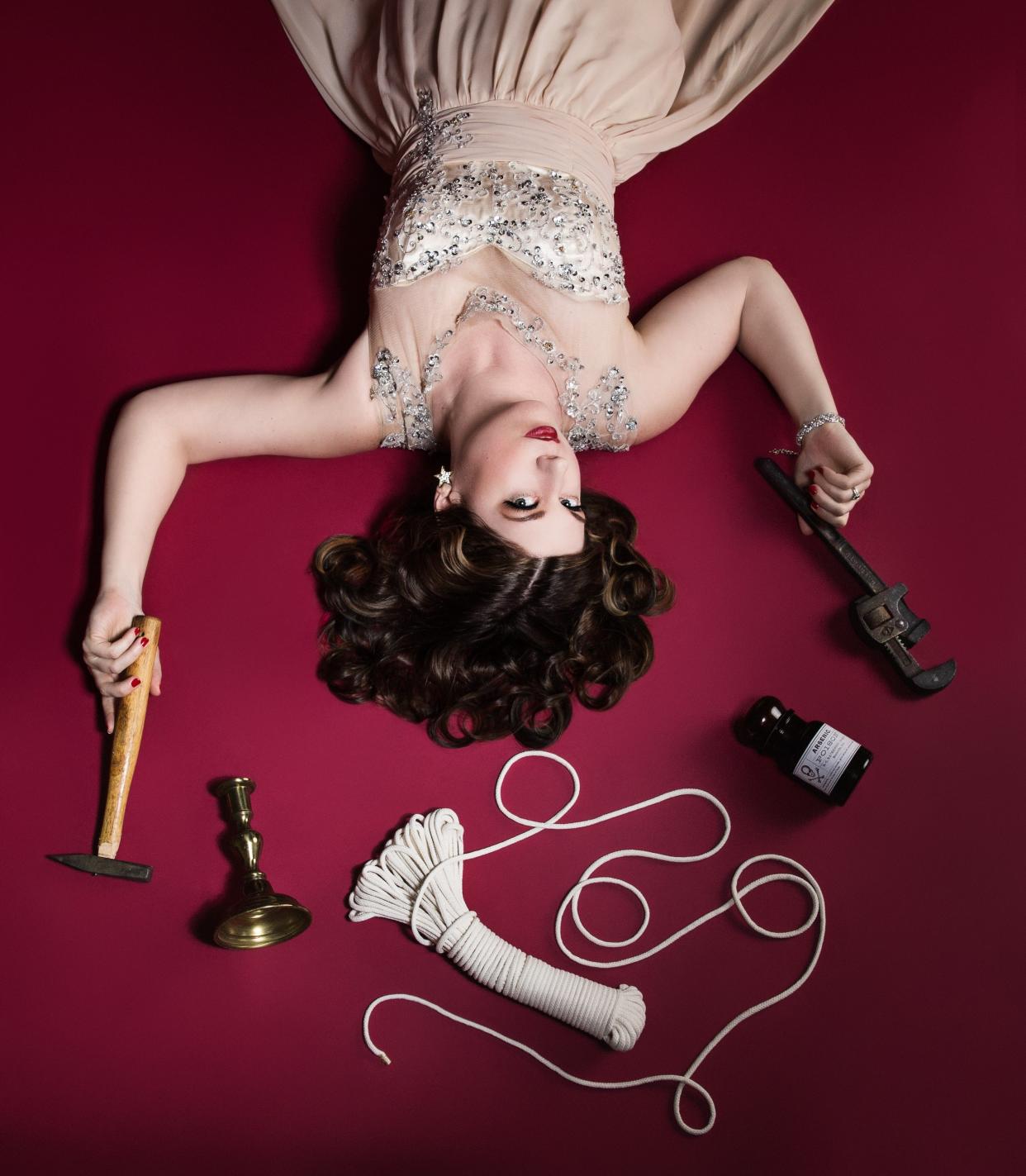Maureen Johnson's new mystery debuts an accidental detective: Read an exclusive excerpt
After five books that have seen young super-sleuth Stevie Bell solve everything from a 1970s sleep-away camp massacre to the cold case of the century, author Maureen Johnson is giving newcomer Marlowe Wexler a chance to get in on the action with the novel, “Death at Morning House.” And Marlowe has no idea what she’s doing.
“Stevie Bell wants to be a detective, and that’s how she becomes one. Marlowe Wexler does not,” says Johnson, the novelist behind the Stevie-centric “Truly Devious” series. “That was my starting point: the accidental detective, the person thrown into a situation by chance, not someone who sought it out. She’s a romantic at heart, awkward, friendly, and in no way prepared to investigate a murder."
In the YA mystery “Death at Morning House” (out now from HarperCollins), Marlowe is a queer girl attempting to get over the worst first date ever – one that involved a smidge of inadvertent arson – when she takes a summer job as a tour guide at a rundown old mansion in the Thousand Islands. She uncovers drama among her new co-workers, the historian who hired her goes missing and dark secrets are afoot in the past and present.

A classic mystery fan, Johnson promises that there are “more Stevie Bell books coming, but this felt like the right time to put a new, standalone book into the mix.” And like the “Truly Devious” novels, “Morning House” weaves together tales of the past and present.
“Mysteries are all about unpicking things that have come before and setting them in order, working out motives, figuring out where the evil set in and why,” Johnson says. “In ‘Death at Morning House,’ I really try to expand on this point to talk about what we learn about American history. What story have we told ourselves about our own history, and what parts did we conveniently leave out? What are some people trying to remove from the curriculum? Because we are always doomed when we refuse to learn from history.”
So would the famously introverted Stevie get along with the gregarious Marlowe? “I think Marlowe would just keep talking at Stevie at first, because she’s outgoing and romantic and gets nervous around girls sometimes. Stevie would take it all in in silent horror until Marlowe tired from the initial outburst. Then they could talk about murder.”
Read below an exclusive excerpt from Chapter 7 of "Death at Morning House" by Maureen Johnson:

I don’t believe in curses, exactly, but I’d had some bad luck this summer and it seemed like the universe was sending Marlowe Wexler a message to keep her head down and lower her expectations.
“Curse?” I said, turning to Riki.
“Nothing good happened to that family,” she replied.
“What happened is this,” Dr. Henson cut in, unable to risk hearing history told incorrectly. She pulled out the chair at the far end of the table, keeping a little distance from us, and sat down. “On July twenty-seventh, 1932, Max Ralston drowned in the afternoon when he was left unattended. His sister Clara fell off the roof that night, presumably jumping due to grief. Faye Ralston, Max’s mother, didn’t recover from the shock. A month or two later, Phillip Ralston sought the advice of his medical colleagues, and decided to take her to the first private psychiatric facility in the United States, Craig House. Craig House was a modern facility run by Dr. Clarence Slocum. It’s outside New York City in the town of Beacon. It was a very fancy place — Zelda Fitzgerald was there when Faye was. Marilyn Monroe would stay there later.”
“Fancy,” Van said.
“That’s where Faye was during Christmas 1932, just five months after the deaths. Phillip rented a large house in the woods nearby so the family could spend the holiday together. But on the twenty-eighth of December, Dagmar, Phillip’s sister, and Unity took a walk through the snow. They didn’t know the area, so they didn’t realize the snowy ground they were walking on was a frozen pond underneath. They fell through the ice and drowned. That’s four members of the family dead between July and December.
“So now there were four Ralston children: William, Victory, Edward, and Benjamin. Victory attended Yale University, where she graduated from medical school with honors. William studied music at Juilliard, and Benjamin studied painting at Beaux-Arts de Paris. None of them were slouches. Benjamin got out of Paris before the Nazi invasion in 1940 and encouraged Victory and William to join him in London to aid the war effort. They got a house together. Victory worked in a war hospital, William helped refugee efforts, and Benjamin worked with British intelligence. He was away on the night in 1941 when a bomb landed on their street and blew up the house. Victory and William were both killed. Phillip had a heart attack when he got the news. He survived that one, but not the next one, which happened five months later. So, in 1941 that’s three more Ralstons dead.”
This was a cheerful countdown.
“Meanwhile,” she said, “Edward had been in New York. He had a serious alcohol addiction. Technically he worked as a banker, but really he spent his time gambling and partying. He was driving drunk one night in 1944 and drove his car into a river and died. Faye never left the hospital and died there in October 1947. That left Benjamin as the very last Ralston. He was a decorated war hero and well respected in the art community. He came out as a gay man to his siblings quite early on. Benjamin was a champion for people with AIDS, long before the disease had its formal name. He poured much of his remaining fortune into housing and treatment programs for those with the disease. Moreover, he was known to help people on a personal level—going to hospitals, sitting with people who had lost partners, providing food, shelter, and comfort wherever he could. He paid bail for people who were jailed during ACT UP protests.”
“Raise one to Benjamin,” Van said, raising his can of Coke. “Here’s to a real one.”
“And the only one who made it to old age. And that is the story that the Ralston curse is based on. In reality, it was a strange family that made its own bad luck, though some members of the family tried to be beneficial to society.”
Lecture finished, Dr. Henson stood to go, focusing on her phone and not looking at us again.
“Going to dinner in town,” she said as she left the room.
“Make sure to clean this up.”
Suddenly, Riki’s I Like Spooky S--- made a lot of sense. She had been following the story as it was told, hooked on every word, though she clearly knew all the details. She was into it. There was no missing it. Now that it was over, she too got up, leaving her dirty plate.
“Are you going to help clean up?” Liani asked.
“No,” Riki said. “I’m an independent contractor.”
“I can think of other things you are.”
“Happy for you, Liani. Nurture that imagination.”
As Riki walked toward the door, she stopped as she was about to pull her headphones over her ears.
“Oh, by the way,” she said to me, “did anyone mention you’re taking over for a dead guy?”
This article originally appeared on USA TODAY: Maureen Johnson debuts a new sleuth in 'Death at Morning House'
